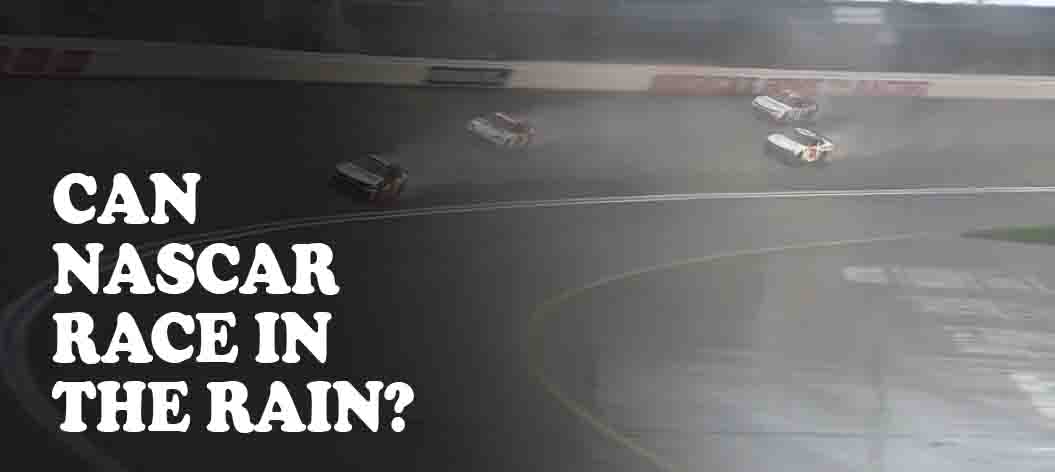It’s common sense to cancel the NASCAR race when there’s rain in the forecast. It was an unfortunate decision by Formula 1 to rule out the race but, in the end, the safety of the drivers comes first. That’s why the rain races in Formula 1 are so important. They’re run with rain tires and wet weather can add to the excitement of racing. Because they have all the necessary equipment and tools needed to run their races on dry pavement, as well as the drivers and cars.
What if it’s raining during a NASCAR race? Do they just keep going and hope it stops or do they call it off? That’s the kind of question that can ruin your plans. A rain delay in the NASCAR Cup Series works just like it does in all other sports, with the exception that the field is already laid out. Rain impacted the 2020 NASCAR season? More than any other year in recent memory. Rain interrupted nearly two-thirds of the races, including the inaugural race at the new Auto Club Speedway.
A complete rundown of NASCAR series races that have been run in the rain.

Table of Contents
Why NASCAR Cup Races Occur in the Rain?
When you think of NASCAR races, you probably picture the sun shining brightly in the background. The sport is all about speed, so it makes sense that it takes place in the day.
But there are two reasons why the races happen in the rain. First, it’s the only day of the year that race cars can run on wet asphalt. Second, the weather makes for exciting racing conditions.
This isn’t the first time that NASCAR has used rain in its races. In fact, it has been an integral part of the sport for a long time. During the 1950s, it was common for races to take place in rainy conditions. By the early 1980s, the NASCAR rules specified that races could occur in the rain or snow.
So why does it rain so often at these events? Weather is a big factor. Rainy conditions create a unique racing surface, thanks to the slick track, muddy dirt, and water-covered concrete. These elements can alter the handling of a car, which can increase speed and control.
Rainy weather also affects the outcome of the race. Heavy rains can cause a racetrack to become slippery. This can slow down cars that go off-course, forcing them into other vehicles or onto the field. The wet and sloppy conditions can also affect the tire performance of a racecar. The treads of tires that are on the ground for a longer period of time tend to wear down more, decreasing grip. That means the racecars will be less stable and require more steering corrections to maintain speed.
The weather is also a driving force in the decision to cancel a race. If a race is canceled before it starts, it will be rescheduled for another day.
Why NASCAR Cup Races Usually Don’t Occur in the Rain?
The reason why NASCAR Cup races usually don’t occur in the rain is because they are usually held on oval tracks. These tracks are usually made of dirt. Dirt isn’t the best surface for cars to race on when it is wet. The best surfaces for a car to race on when it is raining are those that are made of asphalt. Asphalt is a black colored material. It doesn’t absorb water as much as dirt does.
It is because of this that NASCAR racing usually occurs on tracks that are paved with asphalt. The rain that falls on a dirt track will roll off the track and away from the track. However, the rain that falls on an asphalt track will collect on the track and stay on the track. If a driver is driving over a track covered in rainwater, he may lose control of his car. A wet track can also be dangerous because it can be very slippery.
It may be too wet for a driver to get traction on. He will have to steer his car at a very slow speed, making it harder to pass the other drivers. A driver may also run off the track and crash into the guardrail or other cars on the track.
What Flag Represents Wet Weather Conditions?
When the weather gets so bad that drivers can’t see, or when the race track conditions are unsafe for the drivers, the red flag is waved to signal for a stop. Red flags alert all drivers that the race is not in suspension. They could be caused by crashes or other problems. The driver must alert the crew chief of the red flag condition, and the crew chief can alert the pit stop team or the race control center. A few days after the Indy 500, rain clouds will appear to drop their loads and quickly evaporate, and the tracks will dry up quickly.
How Much Did Rain Impact the 2020 NASCAR Season?
The 2020 Cup Races were marred by rain. More than 60% of the races had some weather interference.
Conclusion
In conclusion, there are times when NASCAR races will go on, even if the weather turns rainy. It’s important to stay safe when driving in the rain. If possible, stay out of bad weather and avoid being distracted. Generally speaking, most racers won’t start a race if it looks like it’ll rain. If the race cannot start due to the bad weather, the race will start the next day.

